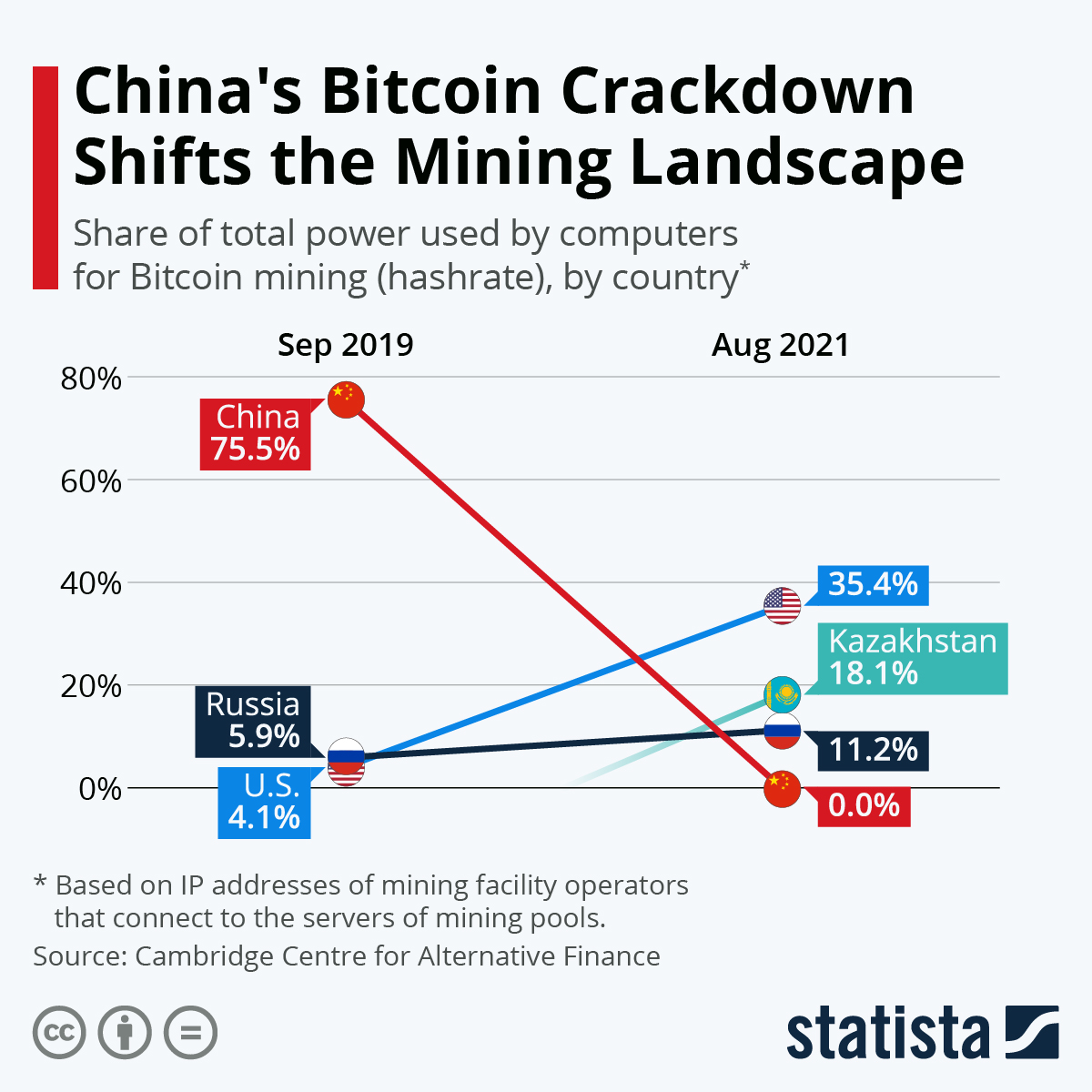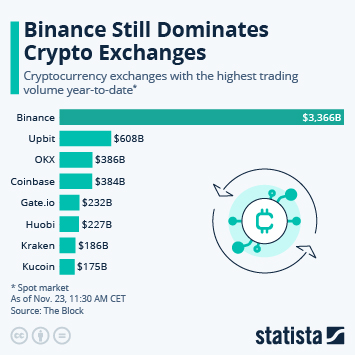Back in September 2019, Bitcoin miners in China accounted for a massive 76 percent of all computer energy used in the mining of the cryptocurrency. Since the country's crackdown on crypto though, the landscape has been dramatically changed. In the same month of 2019, miners with IP addresses in the United States were using just 4.1 percent of computer energy - the so-called 'hashrate'. Fast forward to the summer of 2021 and the U.S. is suddenly the number one consumer of Bitcoin energy, making up over a third at 35 percent with China's share crashing to 0.0 percent.
Data from the Cambridge Centre for Alternative Finance shows that also making a significant shift is Kazakhstan. In September 2019 the nation's hashrate was just 1.4 percent. With China no longer officially a player in the industry, neighboring Kazakhstan now has a rate of 18.1 percent. Highlighting Kazakhstan's new-found importance, the current political unrest in the country and a subsequent internet shutdown has been strongly linked to the most recent Bitcoin price crash.





















